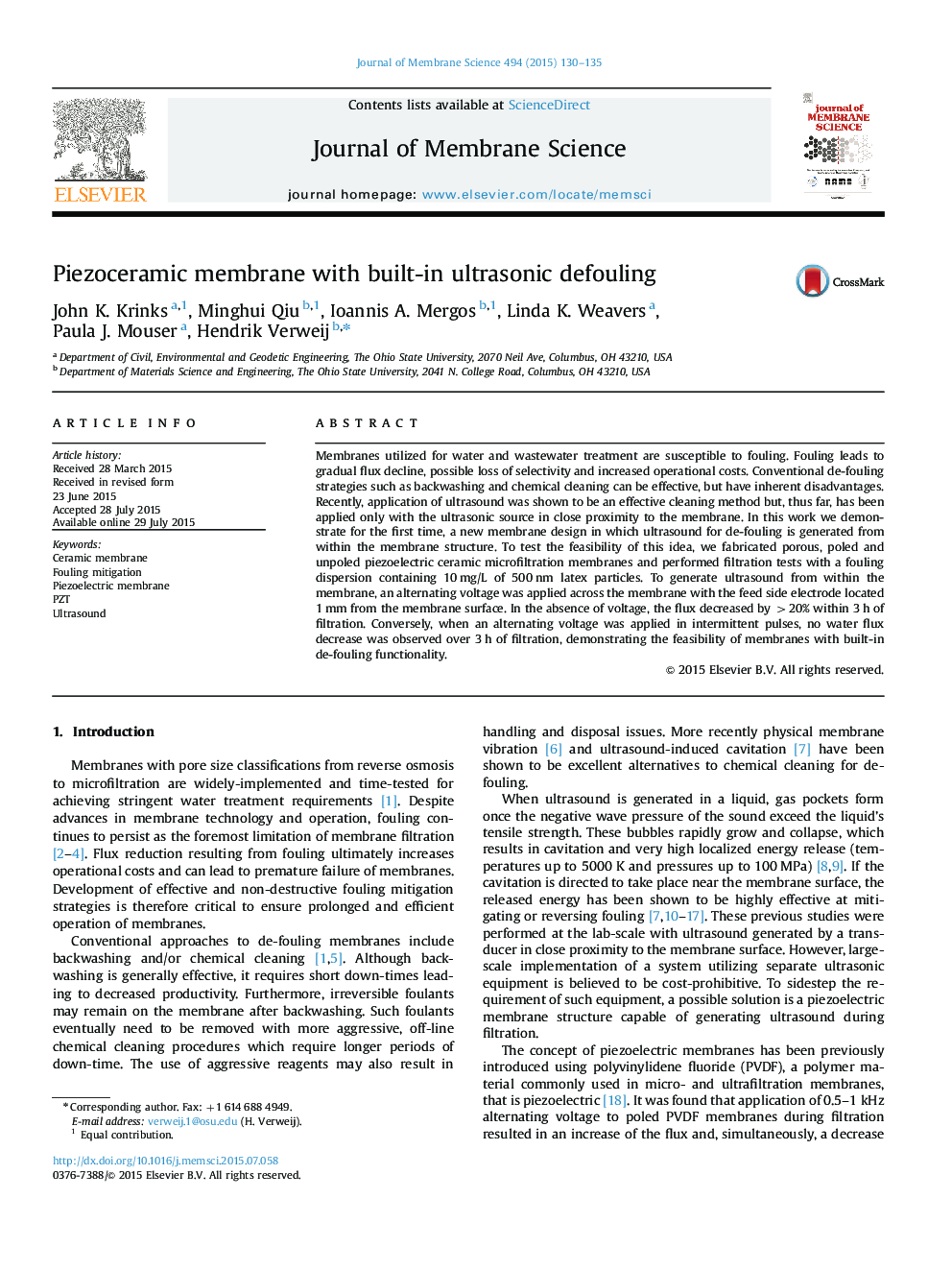| Article ID | Journal | Published Year | Pages | File Type |
|---|---|---|---|---|
| 7020918 | Journal of Membrane Science | 2015 | 6 Pages |
Abstract
Membranes utilized for water and wastewater treatment are susceptible to fouling. Fouling leads to gradual flux decline, possible loss of selectivity and increased operational costs. Conventional de-fouling strategies such as backwashing and chemical cleaning can be effective, but have inherent disadvantages. Recently, application of ultrasound was shown to be an effective cleaning method but, thus far, has been applied only with the ultrasonic source in close proximity to the membrane. In this work we demonstrate for the first time, a new membrane design in which ultrasound for de-fouling is generated from within the membrane structure. To test the feasibility of this idea, we fabricated porous, poled and unpoled piezoelectric ceramic microfiltration membranes and performed filtration tests with a fouling dispersion containing 10Â mg/L of 500Â nm latex particles. To generate ultrasound from within the membrane, an alternating voltage was applied across the membrane with the feed side electrode located 1Â mm from the membrane surface. In the absence of voltage, the flux decreased by >20% within 3Â h of filtration. Conversely, when an alternating voltage was applied in intermittent pulses, no water flux decrease was observed over 3Â h of filtration, demonstrating the feasibility of membranes with built-in de-fouling functionality.
Related Topics
Physical Sciences and Engineering
Chemical Engineering
Filtration and Separation
Authors
John K. Krinks, Minghui Qiu, Ioannis A. Mergos, Linda K. Weavers, Paula J. Mouser, Hendrik Verweij,
